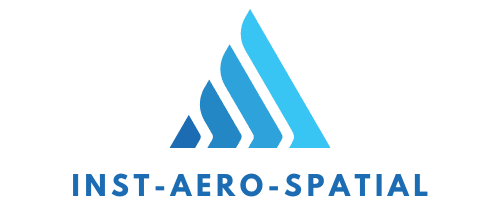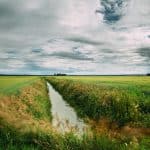It’s no secret that water conservation is a pressing issue in our time. As responsible homeowners, it’s not just about reducing the monthly water bill, but also about doing our part in preserving this precious resource. This is especially crucial in homes with multiple bathrooms where the water consumption can be significantly high. But fear not, there are proven methods to reduce water usage without compromising on comfort or hygiene. We’ll explore these strategies under five key sections: Efficient Toilets, WaterSense Products, Low-Flow Showerheads, Smart Washing and Day-to-Day Efficiency.
Efficient Toilets: More Than Just a Flush
Let’s begin with the toilet, the primary culprit for water waste in a bathroom. The average toilet flush uses around 1.6 gallons of water. With an inefficient toilet, this number can rise to 3.5 gallons or more. So, how can you save water with your toilet?
Also read : How to construct a sturdy treehouse that complies with safety regulations?
The answer lies in high-efficiency toilets. They use considerably less water per flush, typically 1.28 gallons or less. Dual-flush toilets are another excellent option. They provide two flush options: a light flush for liquid waste and a heavier flush for solid waste. This feature alone can save thousands of gallons of water each year.
But it’s not just about the toilet itself. It’s about the habits around it. Consider not using the toilet as a trash can. Every tissue, cigarette butt or piece of dental floss flushed down wastes gallons of water.
Also read : What’s the best way to set up a home bar for craft cocktail enthusiasts?
Embrace WaterSense Products
WaterSense is a program initiated by the U.S. Environmental Protection Agency (EPA). Products with the WaterSense label are 20% more efficient than traditional models and provide equal or superior performance.
For your multiple bathrooms, consider investing in WaterSense labelled fixtures like toilets, showerheads and faucets. These products are tested to meet EPA’s specifications for water efficiency and performance. A WaterSense labelled toilet, for example, can save a family of four, up to 13,000 gallons of water annually.
Moreover, the program also encourages innovations in manufacturing, which means you will have access to a wide range of stylish and contemporary products that are water-efficient.
Low-Flow Showerheads: Save Water, Save Energy
Did you know that showers account for nearly 17% of household water use? An average shower can use up to 2.5 gallons of water per minute. Over time, this adds up to a significant amount of water and energy to heat that water.
Enter low-flow showerheads. These ingenious devices are designed to deliver a flow rate of less than 2.0 gallons per minute, providing the same level of showering comfort while using less water. Additionally, by saving hot water, you’re also reducing the energy costs associated with water heating.
Consider replacing the showerheads in all your bathrooms with low-flow alternatives to maximise water and energy savings.
Smart Washing: For Hands and Clothes
The sink is another area where water usage can be optimised. Choosing an aerated faucet can significantly help in reducing the water flow rate while maintaining adequate pressure. Also, adopting the habit of turning off the tap while brushing your teeth or washing your hands can save gallons of water each day.
As for clothes washing, wait until you have a full load before running the washing machine. Most washing machines use the same amount of water regardless of the size of the laundry load. Therefore, washing full loads can help maximise water efficiency.
Day-to-Day Efficiency: Small Changes, Big Impact
Finally, it’s worth mentioning that saving water is not just about using efficient fixtures and appliances. It’s also about the little changes we can make in our daily habits. For instance, fixing leaky faucets, monitoring your water bill for unusual usage, teaching kids about the importance of conserving water, or using a bucket instead of a hose to clean the bathroom can all contribute to significant water savings.
In conclusion, reducing water usage in a household with multiple bathrooms isn’t as daunting as it sounds. By adopting water-efficient fixtures, using WaterSense products, and making minor adjustments to our daily habits, we can all contribute to water conservation while also reducing our water bills. Remember, every drop saved is a step towards a sustainable future.
Advanced Water Systems: The Future of Conservation
The future of water conservation lies in smart technology, and advanced water systems are the next step in reducing water usage in homes with multiple bathrooms. These systems, whether they are advanced shower systems, leak detection devices, or smart irrigation systems, all contribute to the efficient management of water.
Advanced shower systems manage water flow and temperature, allowing you to customize your showering experience while conserving water. Some models even have remotes that let you set your shower preferences before stepping in, reducing the water waste that comes with adjusting temperatures.
Leak detection devices are another revolutionary invention. These devices can identify leaks in your plumbing systems, alerting you to any water wastage. Some leak detectors can even shut off water supply to the damaged area until it’s fixed, preventing water wastage from unchecked leaks.
Smart irrigation systems are also a great addition to households. They ensure that your garden or lawn gets the exact amount of water it needs, preventing overwatering.
The investment in these advanced water systems can save thousands of gallons of water per year, considerably reducing your water bill and contributing to water conservation efforts.
Recycle and Reuse: Maximizing Water Usage
Water recycling and reuse is an effective way to reduce water usage in houses with multiple bathrooms. Greywater systems, rainwater harvesting, and water-efficient landscaping are all methods to recycle and reuse the water.
Greywater systems recycle the water from your showers, sinks, and washing machines for flushing the toilet or watering plants. This system can reduce the need for fresh water and cut your water usage significantly.
Rainwater harvesting involves collecting rainwater and storing it for later use. This stored water can be used for flushing toilets, washing clothes, watering the garden, and even for showering if it’s properly treated.
Water-efficient landscaping, or xeriscaping, involves designing your outdoor area in a way that reduces or eliminates the need for additional water from irrigation. This includes using local plants that are adapted to your region’s climate and require less water.
Each of these methods, when used together, can drastically decrease the amount of water used in a household with multiple bathrooms.
Conclusion: Water Conservation is Everyone’s Responsibility
Water conservation is more than just an environmental issue—it’s also a financial and ethical responsibility. By implementing these best practices—adopting efficient toilets, using WaterSense products, switching to low-flow showerheads, embracing smart washing habits, making small daily changes, investing in advanced water systems, and recycling and reusing water—we can drastically reduce water usage in our homes.
Not only do these methods save water, they also save energy and money. They offer a more sustainable way of living by reducing our environmental footprint while also cutting down our utility bills.
Remember, water conservation is all about being water-efficient. Every gallon of water saved helps protect this precious resource for future generations. Therefore, every effort we make to conserve water in our homes is a step towards a more sustainable future. Let’s all do our part and conserve water, one drop at a time.
















